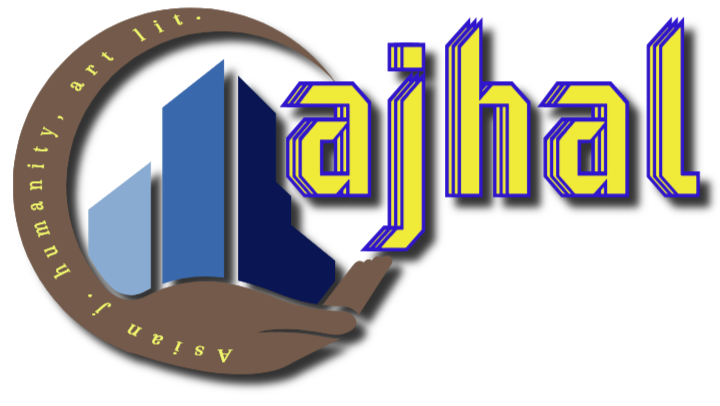Santal Community in Bangladesh: A Socio-historical Analysis
DOI:
https://doi.org/10.18034/ajhal.v5i2.339Keywords:
Bangladesh, Culture, History, Indigenous Community, SantalAbstract
The Santals are one of the most ancient indigenous communities in Bangladesh. Many historians denote them as the earliest settlers in greater Bengal. They mainly belong to Austro-Asiatic group of pre-Aryan settlers. Being the indigenous community of the country, they should have been more influential and developed. But the reality is different. Santals are deprived of stately rights and privileges in many aspects. It has a historical legacy of isolation and clash. As Santals live isolated from mainland people, proper attention was never given to them. Rather they were tortured and oppressed both by colonial and post-colonial rulers, which led them to launch many resistances. But ultimately those resistances could not completely stop the deprivation. In spite of all these challenges, Santals are still struggling to uphold their socio-cultural tradition. The absence of written document in Santal society created a paucity of information in the reconstruction of their history. Therefore, secondary source was mainly used in this research. This study tries to explore the social customs, livelihood and cultural features of Santal community keeping a special focus on the historical development. It indicates that they have historically been deprived in many ways, but they are still able to uphold their distinct cultural features in most of the cases.
Downloads
References
Ali, A. (1998). Santals of Bangladesh. Midnapur, India: Institute of Social Research and Applied Anthropology.
Azad, S. (2003). Adibashider Bhasha (Language of Indigenous). Dhaka: Nowroj Publications.
BBS. (2011). Census Report. Dhaka: Bangladesh Bureau of Statistics.
Bleie, T. (2006). Tribal Peoples,Nationalism and the Human Rights Challenge: The Adivasis of Bangladesh. Dhaka: The University Press Limited.
Bodley, J. H. (1999). Victims of Progress (4 ed.). California: Mayfield Publishing Company.
Cavallaro, F., & Rahman, T. (2009). The Santals of Bangladesh. The Linguistics Journal , Special Edition, 201.
Chakma, S. (2002). Bangladesher Opojati O Adibashider Shomaj, Sangskriti O Achar Bebohar (Socio-cultural Behaviour of the Tribal and Indigenous People of Bnagladesh). Dhaka: Nouroj Publication.
Chowdhury, A. M. (2004). Ancient Bengal. In A. F. Ahmed, & B. M. Chowdhury (Eds.), Bangladesh National Culture and Heritage (p. 54). Dhaka: Independent University Bangladesh.
Chowdhury, M. S., & Chakma, P. (2016). Human Rights Report 2015 on Indigenous Peoples in Bangladesh. Kapaeeng Foundation, Dhaka.
Corntassel, J. J. (2003). Who Is Indigenous?: 'Peoplehood' and Ethnonationalist Approaches to Rearticulating Indigenous Identity. Nationalism and Ethnic Politics , 9 (1), 75-100. DOI: https://doi.org/10.1080/13537110412331301365
Debnath, M. K. (2010). Living on The Edge: The Predicament of a Rural Indigenous Santal Community in Bangladesh. A thesis submitted in conformity with the requirements for the degree of Doctor of Education, Ontario Institute for Studies in Education of the University of Toronto, Department of Sociology and Equity Studies in Education.
Dey, A. (2015). An Ancient History: Ethnographic Study of the Santhal. International Journal of Novel Research in Humanity and Social Sciences , 2 (4), 31-38.
Drong, S. (2001). Bangladesher Biponno Adibashi (Trailing Indigenous of Bangladesh). Dhaka: Nouroj Publications.
Gerharz, E. (2014). What is in a Name? Indigenous Identity and the Politics of Denial in Bangladesh. South Asia Chronicle , 115-137.
Hasan, M. (2016, December 16). Retrieved January 05, 2017, from Dhaka Tribune: http://www.dhakatribune.com/bangladesh/nation/2016/12/16/santals-claims-on-sugar-mill-land-valid/ DOI: https://doi.org/10.1002/cala.30394
Hasan, M. (2006). Livelihoods of The Santals. (H. Mohiuddin, Ed.) Dhaka: for Applied Social Studies Center.
Hembrom, C. K. (1948). The history of the Santal Parganas, Santals and Paharias.
Hossain, K. T. (2008). The Santals of Bangladesh : An Ethnic Minority in Transition. Retrieved January 20, 2017, from Anthropology Bangladesh: http://anthropology-bd.blogspot.com/2008/07/santals-of-bangladesh-ethnic-minority.html
ILO. (2013). Understanding the Indigenous and Tribal Peoples Convention, 1989 (No. 169). Handbook for ILO Tripartite Constituents. International Labour standards Department. Geneva: International Labour Organization.
Iva, I. A. (2009). Status of Minorities in Bangladesh in 2009. Annual Report, South Asians for Human Rights.
Jalil, A. (1991). Bangladesher Saontal: Samaj O Sanskriti (Santal of Bangladesh: Society and Culture). Dhaka: Bangla Academy.
Kamal, M. (2007). Introduction. In M. Kamal, J. Islam, & S. Chakma (Eds.), Indigenous Community (p. vi). Dhaka, Bangladesh: Asiatic Society Bangladesh.
Kim, S., Kim, A., Ahmad, S., & Sangma, M. (2010). The Santali Cluster in Bangladesh: A Sociolinguistic Survey. SIL International.
Marandy, F. J. (2015). Short History of the Santals in Bangladesh. Retrieved January 9, 2017, from Fostering Communion And Integral Human Development in Bangladesh: https://sites.google.com/site/bdguiber/home/6-english/bangladesh/adivasy/evangelization-of-santal/chapter-ii-bangladesh-a-fertile-ground-for-the-mission-of-evangelization/ii-short-history-of-the-santals-in-bangladesh
Murmu, S. (2016). Understanding the Concept of God in Santal Traditional Myths. Retrieved January 10, 2016, from Indian Journal of Theology: https://biblicalstudies.org.uk/pdf/ijt/38-1_072.pdf
Partha, P. (2016, November 17). Researcher explains the origin of Santal-Bangali land dispute in Gaibandha. http://www.dhakatribune.com/bangladesh/nation/2016/11/17/watch-researcher-explains-origin-santal-bangali-land-dispute-gaibandha/. Dhaka Tribune.
Sarker, M. A. (2014). The Livelihood of the Santals in the Context of Declining CPR in Dinajpur. A Dissertation for Master of Arts Degree, BRAC University, Institute of Governance Studies, Dhaka.
Sharif, S. (2014, June). Education and Skill Development of Santal Children and Youth in Bangladesh. Bangladesh Education Journal , 8.
Singh, L. B. (1988). Santal youths: An unseen talent. New Delhi: Wisdom.
Star, T. D. (2016, November 7). The Daily Star. Retrieved January 20, 2017, from http://www.thedailystar.net/backpage/police-santals-labourers-clash-over-sugarcane-harvest-1310596
Toru, M. I. (2008). Bangladesher Adibashi Songskriti (Indigenous Culture of Bangladesh). Dhaka: Kotha Publication.
Toru, M. I. (2007). Santal. In M. Kamal, Z. Islam, & S. Chakma (Eds.), Indigenous communities (p. 353). Dhaka: Asiatic Society of Bangladesh.
Uddin, M. E. (2008). Cross-cultural family structure Between Muslim & Santal communities in Rural Bangladesh: A Review. The World Cultures eJournal , 16 (1), 10.
UNO. (2009). Department of Economic and Social Affairs. New York: United Nations publication.
World Bank. (2005). Retrieved January 10, 2017, from http://siteresources.worldbank.org/EDUCATION/Resources/Education-Notes/EdNotes_Lang_of_Instruct.pdf
--0--















